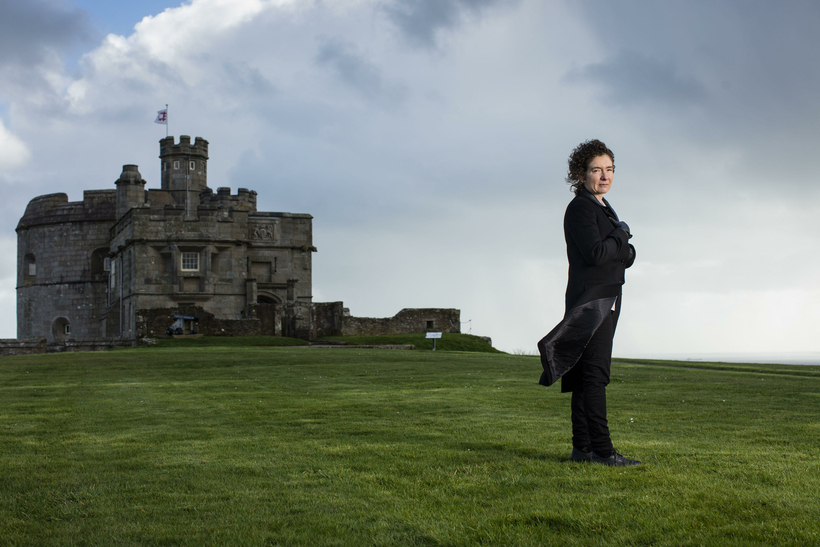I fell into a dream when I began Jeanette Winterson’s 11th novel, Frankissstein: A Love Story. This was in large part due to its lush and evocative descriptions of young Mary Wollstonecraft Shelley’s life in 1816 when she was domiciled outside of Geneva with her future husband, Percy Bysshe Shelley, and his best friend, Lord Byron. Both poets egged her on, some might say, into giving birth to science fiction by writing the totemic, tragic Frankenstein.
In Winterson’s intimate, romantic rendering of Mary’s own tragic life—she never knew her famous writer mother; she lost three of her own children by the time she was 25—the psychological underpinnings of her nightmare vision of a monstrous creature brought to life are made clear. Turning that nightmare into a novel on a dare (to write the most frightening ghost story of all) led Shelley to explore attachment, and the fear of its extinction by death or, maybe worse, the death of love.
Winterson is a marvel here, capturing the heady conversations and claustrophobia of this tight-knit group (the Shelleys and Byron were accompanied by Mary’s stepsister, Claire, and a doctor friend) in waterlogged captivity during a particularly rainy and penurious period, even finding the bitter humor in all this ingrown creativity. “‘I should like to say more about the soul,’ said [Percy] Shelley. Byron groaned. Polidori coughed. Claire stitched viciously at her cushion cover.” But intellectual game-playing is only a distraction; the disasters Shelley has incurred as a daughter, mother, and lover—as a woman—continue to haunt her, cursing her with despair. “I have love, but I cannot find love’s meaning in this world of death,” thinks Mary. “A little patience, and all will be over,” she quotes her own mother’s dying words, spoken while giving birth to Shelley herself.
Next-Generation
There’s more to this rich, ambitious, and sometimes vexing book than just Shelley’s story, plus the imaginary monster she created; there’s also Winterson’s somewhat meta gloss on it: in a parallel narrative that plays out in the present (or perhaps the near future), Winterson introduces a trans-male doctor, Ry Shelley (short for Mary), who meets one Victor Stein, a professor of A.I. who is working on transhumanism. Professor Stein is seeking a way to defy death by preserving the mind without the discomfort and unreliability of anatomy and its genders. He specializes in cryopreservation and robotics.
Stein’s business partner, Ron Lord (a crass, crude, and only sometimes hilarious modern-day Byron), has his own turf testing the bounds of corporality: sexbots. He is a study in unbridled discrimination and misogyny. When he displays his newest bot, “Claire” (yes, most of the 19th-century characters reappear in contemporary form), and is questioned about the bracket on her back, he says, “That’s an optional extra. She can be wall-mounted…. So that you can fuck her standing up.” “FUCK ME STANDING UP,” says Claire, consistently malfunctioning ribaldly as a crowd gathers to gawk.
The crass, crude, and only sometimes hilarious modern-day Byron is a study in unbridled discrimination and misogyny.
Stein and Ry become lovers, to Stein’s surprise. “I’m not gay,” he says, as if to convince himself. Ry, who has opted for top surgery but has preserved their vagina, says, “I am a woman. And I am a man. That’s how it is for me. I am in the body that I prefer…. I did it to get nearer to myself.” And so, a man who is willing to give up his body to preserve his mind finds sexual love with a non-binary person who needed to become themselves through chemical augmentation and surgery. Clearly Winterson is reporting, having fun, and exploring the runaway effects of science and technology, the hubris of its creators and the folks who’d get rich off them. This novel is full of facts, fantasies, quotes, and even more historical characters. (Ada Lovelace and Alan Turing make cameo appearances.)
At times the ideas Winterson presents, both romantic and scientific, are quite rousing. Elsewhere, the quick shifts in narrative feel fractured and, dare I say it, disembodied. While one never tires of the myriad ways humans manage to create their own annihilating monsters, I was less captivated by Victor Stein than I’d hoped to have been—as his story traveled further underground, quite literally, I lost some of my readerly drive, not because it was far-fetched, but because for all the author’s dazzling imagination, it feels as stitched together as Shelley’s monster.
Still, I bet Shelley would have appreciated Winterson’s daring as much as I do. No wonder she was longlisted for the Man Booker.
Helen Schulman is a writer and professor living in New York City. She is the author of several novels, including This Beautiful Life and, most recently, Come with Me


